Following the Q3 national accounts release last month, Pradeep Philip, head of Deloitte Access Economics, noted that the private sector was being “clobbered” and the economy was “stuck in the mud and spinning its wheels”.
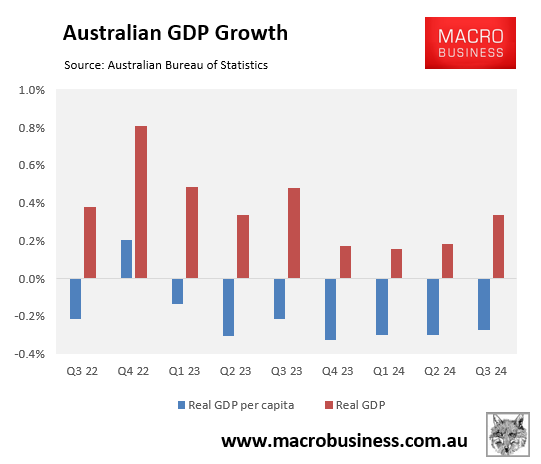
Innes Willox, CEO of the Australian Industry Group (AIG), shared a similar opinion, pointing out that the private sector is in recession and losing jobs.
“The data shows much of the private sector faces recession-like conditions. It is only a flood of government spending in recent months that is masking the true picture in the broader economy”, Willox said.
“It is clear the non-government sector of the economy, the private sector, is in contraction and you could then argue it is in recession”.
“There is a big transfer between the private sector and the public sector at the moment”.
“The private sector is shedding jobs to the public sector, which is picking up jobs. But are they the productive jobs we want?”.
“The real problem we have here for the economy is that the private sector, which is the engine room of the economy, is slowing quite dramatically”, he said.
Indeed, the non-market (government-aligned) sector has fueled all of Australia’s recent economic growth.
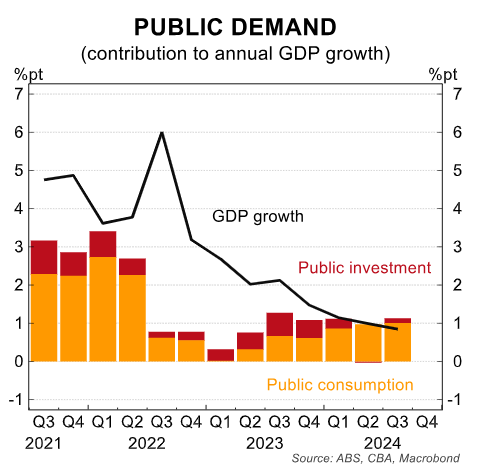
The non-market (government-aligned) sector has also been responsible for nearly all of Australia’s job growth.
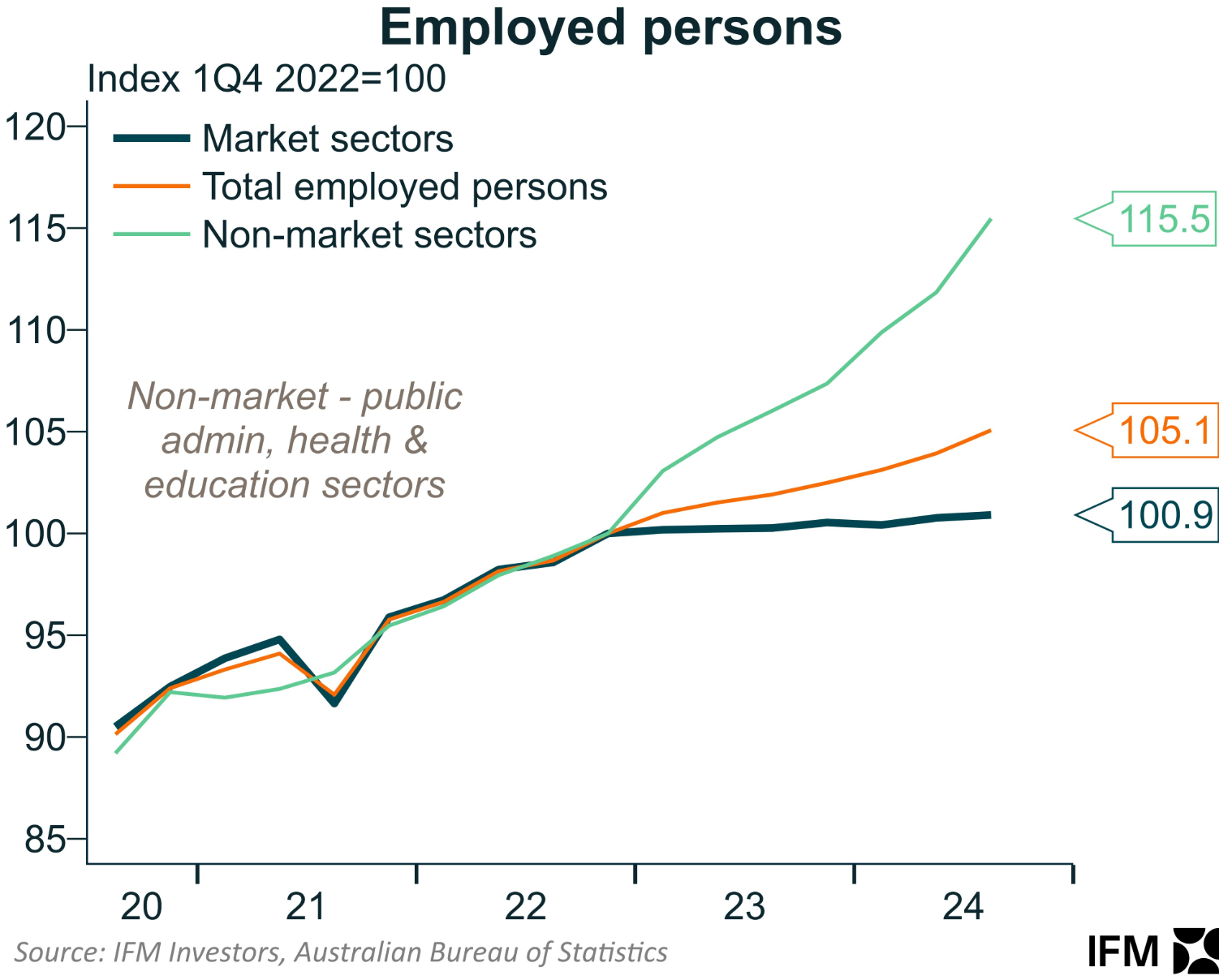
S&P Global has released its composite Australian PMI for December, which suggests the private sector economy was stillborn in Q4 2024, with employment also falling:
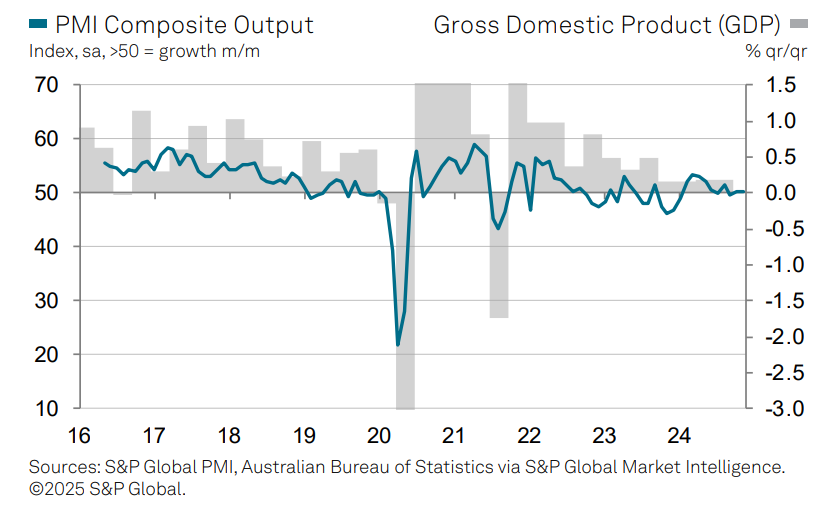
Private sector output remains in marginal expansion
The Composite Output Index posted 50.2 in December, unchanged on October and November readings.
This marked a third marginal expansion in private sector output, with growth limited to services as manufacturing output fell.
The trends were similar for new orders. However, employment fell across the private sector with a further reduction in outstanding business.
Meanwhile, the pivot to the non-market sector has depressed Australia’s labour productivity, which fell to late-2016 levels in Q3 2024.
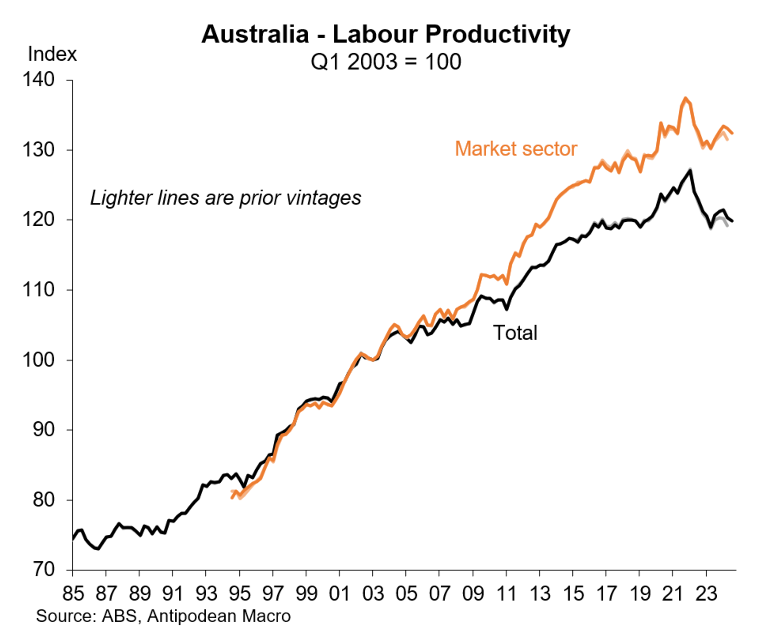
As a result, Australia’s labour productivity growth ranked among the poorest in the developed world since 2018.
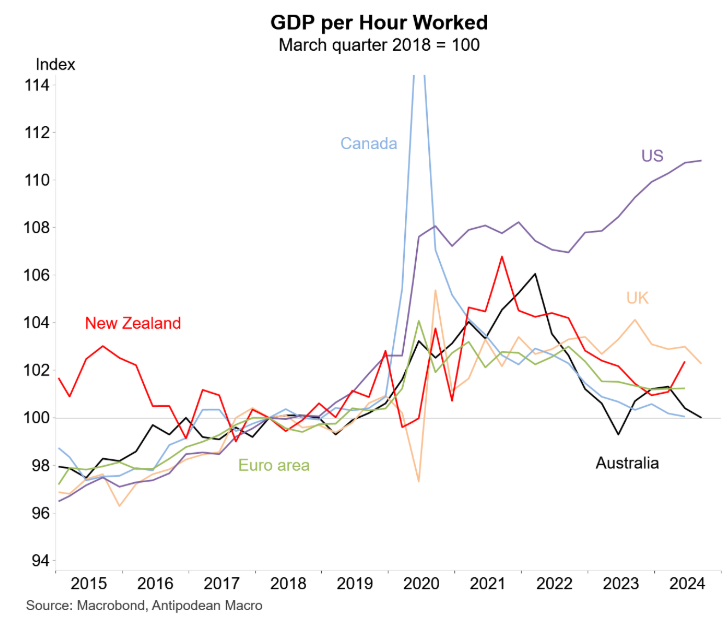
An economy that relies too heavily on immigration and government spending to grow is unsustainable.
As long as this economic model is in place, Australian living standards will suffer.

